#NAACP ENTERTAINER OF THE YEAR
Explore tagged Tumblr posts
Text
AYO EDEBIRI SYDNEY ADAMU NAACP AWARD. THE BEAR SEASON 3

#naacp image awards#NAACP AWARD Ayo Edebiri#the bear#carmy berzatto#sydney adamu#carmy x syd#love#sydcarmy#slow burn#romance#relationship#ayo edebiri#Jeremy Allen white#jayo#ayomy#danielle deadwyler#keke palmer#cynthia erivo#kevin hart#entertainer of the year ayo Edebiri#naacp image awards ayo Edebiri#shannon sharpe#kendrick lamar
6 notes
·
View notes
Text
2025 NAACP IMAGE AWARD NOMINATIONS
ENTERTAINER OF THE YEAR NOMINEES
Cynthia Erivo
Keke Palmer
Kendrick Lamar
Kevin Hart
Shannon Sharpe


#kendrick lamar#cynthia erivo#keke palmer#kevin hart#shannon sharpe#naacp image awards#2025 naacp image awards#movies#film and television#film and tv#wicked#wicked part one#wicked movie#wicked elphaba#gnx kendrick lamar
21 notes
·
View notes
Text
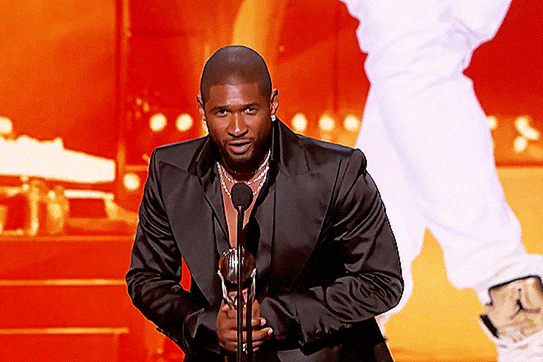
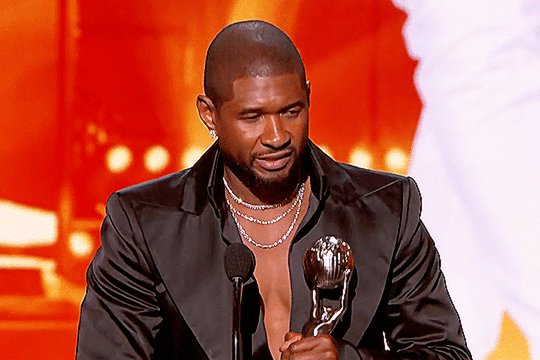
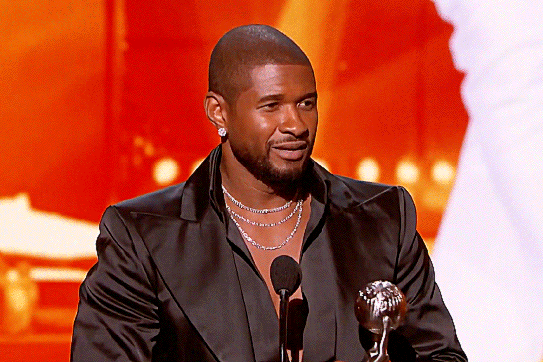
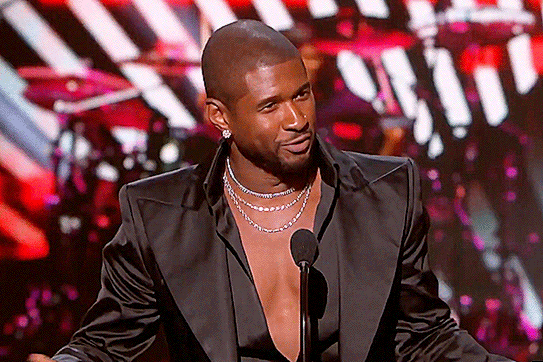

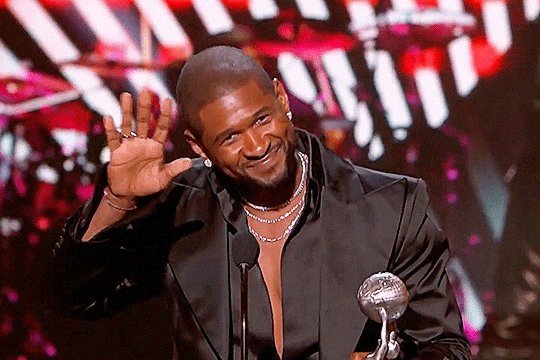
USHER at the 55th NAACP Image Awards (2024)
Outstanding Male Artist
President's Award Honoree
Entertainer of the Year
55 notes
·
View notes
Text


Esther Jones was known on stage by many names, including “Baby Esther,” “Little Esther,” “Farina’s Kid Sister,” and “Miniature Florence Mills,” is widely, although not universally, credited with being the inspiration for the Betty Boop cartoon character. Jones was born Esther Lee Jones in 1918 in Chicago, Illinois, to William Jones and Gertrude Jones.
In 1928, the Jones family moved to Harlem, New York. At seven, Jones was later known for adopting the popular singing style, scat, which emphasized the baby-style of “b” and “d” sounds and nonsense syllables such as Boo-Boo-Boo’ and ‘Doo-Doo-Doo.’ Consequently, she was a sought-after child performer in the city, and was a fixtured entertainer in the famous Cotton Club and the Everglades Nightclub in New York City during the latter years of the Harlem Renaissance. She added to her entertainment fame by become an extraordinary black-bottom dancer.
In 1929, Jones was taken to Spain, where she was called “La Pandilla.” Later she performed before Sweden’s Queen Sophie Marie Viktoria and King Gustaf V, in Stockholm. Despite her notoriety, she also experienced blatant racism when denied a glass of milk in an American-operated restaurant in Stockholm. The business, however, was forced to close after her treatment there became public knowledge.
Jones performed at the Moulin Rouge, Casino de Paris, and the Empire in Paris, France. There she was dubbed the “Miniature Josephine Baker.” While in Europe, she was paid an average $750 per week for her performances and by age 11, Jones was the highest-paid child on stage globally. After performing, Jones would go backstage to play with dolls. Whenever she performed, both parents were in attendance.
In 1930, Fleisher Studios in Hollywood introduced the cartoon character Betty Boop. Jones, however, received no royalties or performing credits despite the fact that a lawsuit would eventually expose Betty Boop’s true origins. The lawsuit ironically was brought by Helen Kane, a white performer, who sued Fleisher Studios for appropriating her “Betty Boop” character without her permission and without the payment of royalties. Over the course of the Fleisher Studios v. Kane trial, it was revealed that Kane had begun mimicking Jones’ scat act and even sang the same song, “I Want to Be Loved By You’ including the “Boop-Boop-a-Doop” reference. When Kane lost the lawsuit, other studios felt emboldened to promote the Betty Boop character but it recognized neither Kane or Jones as the source.
In 1934, Jones, now 16, performed in Philadelphia at a midnight benefit performance for the NAACP. That same year, she gave a stellar performance at the American Embassy in Rio de Janeiro, Brazil at the request of then Ambassador Jefferson Caffery. Brazil’s President Getúlio Dornelles Vargas, was in the audience and praised the performance and performer.
By 1940, however, the entertainment career of now 22-year-old Esther Jones, was over. She was no longer a child singing or dancing sensation. Esther Jones, now widely credited with influencing the iconic sex symbol Betty Boop, died in 1984 in New York City from liver and kidney complications. She was 66. Regardless of her role in the development of the Betty Boop cartoon character, Jones should be remembered as a child star with a brief but remarkable career in the entertainment industry.
•••
Esther Jones fue conocida en el escenario por varios nombres, incluyendo: “Baby Esther (Bebé Esther),” “Little Esther (Pequeña Esther),” “Farina’s Kid Sister (Hermanita de Farina),” y “Miniature Florence Mills (Florence Mills en miniatura). Generalmente, pero no universalmente, acreditada con ser la inspiración del personaje de caricatura, Betty Boop. Esther Lee Jones, nació en 1918 en Chicago, Illinois a sus padres William Jones y Gertrude Jones.
En 1928, la familia Jones se mudó a Harlem, Nueva York. A la edad de siete años, Jones fue reconocida por adoptar el famoso estilo de canto llamado ‘scat’ y resaltaba los sonidos de bebé que sonaban con ‘b’ y ‘d’, junto con sílabas que no tenían sentido como: Boo-Boo-Boo’ y ‘Doo-Doo-Doo.’ Consecuentemente, esto la convirtió en la artista infantil más buscada de la ciudad. Se convirtió en una presentadora fija en el famoso Cotton Club y el club nocturno Everglades en la ciudad de Nueva York, esto fue durante los últimos años del Renacimiento de Harlem. Le agregó más a su fama cuando se convirtió en una bailarina de black bottom (un paso de baile relacionado con el jazz tradicional).
En 1929, Esther fue llevada a España, dónde le llamaban “La Pandilla”. Poco después de eso, hizo una presentación en Stockholm frente a la Reina Sophie Marie Viktoria y el Rey Gustaf V de Suecia. A pesar de su notoriedad, también experimentó racismo muy evidente cuando se le negó un vaso con leche en un restaurante operado por americanos en Stockholm. Sin embargo, una vez que el trato que se le dio se hizo público, obligaron a que el negocio cerrara.
Jones se presentó en Moulin Rouge, Casino de Paris, and the Empire, ubicados en Paris, Francia. Es aquí donde le dieron el apodo de “Josephine Baker en miniatura”. Mientras que estuvo en Europa se le pagaban aproximadamente $750 por semana y con solo once años de edad, Jones era la artista infantil mejor pagada a nivel global. Después de sus presentaciones, ella se iba tras bastidores a jugar con muñecas. Sus padres siempre estaban presentes para las presentaciones.
En 1930, Fleisher Studios de Hollywood introdujo un nuevo personaje, Betty Boop. Y a pesar de que una demanda demostraría el verdadero origen de la caricatura, Jones nunca recibió crédito o derechos. Irónicamente, la demanda fue interpuesta por Helen Kane, una artista que había demandado a Fleisher Studios por apropiarse de su personaje “Betty Boop” sin su permiso y sin pagarle sus derechos. Durante el juicio Fleisher Studios v. Kane, se reveló que Kane había comenzado a imitar el acto de scat de Jones y que incluso cantaba las mismas canciones como ‘I Want to Be Loved By You’ incluyendo la referencia: “Boop-Boop-a-Doop”. Cuando Kane perdió la demanda, otros estudios se animaron a promover al personaje Betty Boop, sin reconocer a Kane o Jones como la fuente.
En 1934, Jones, ahora con dieciséis años de edad, hizo una presentación en Philadelphia para una noche de beneficencia de la Asociación Nacional para el Progreso de la Gente de Color (NAACP). Ese mismo año, a petición del embajador Jefferson Caffery, hizo una presentación estelar en la embajada americana ubicada en Rio de Janeiro, Brazil. El presidente Getúlio Dornelles Vargas se encontraba en la audiencia, elogió la presentación y también a la presentadora.
Para 1940, con veintidós años de edad, la carrera de Esther Jones en la industria del entretenimiento, ya se había acabado. Ya no era una sensación infantil que bailaba y cantaba. Esther Jones, ahora extensamente acreditada con ser la influencia del símbolo sexual, Betty Boop, murió en 1984 en la ciudad de Nueva York, por complicaciones renales y hepaticas. Tenía 66 años. Independiente de su rol en el desarrollo del personaje, Betty Boop; Esther Jones debería de ser recordada como una estrella infantil que tuve una carrera corta pero extraordinaria.
#culture#knowyourhistory#like#follow#newpost#historyfacts#blackgirlmagic#black women#black women matter#blacklivesmatter#blacklivesalwaysmatter#english#spanish#blackhistory#history#share#read#blackpeoplematter#blackhistorymonth#black lives matter#blackgirlsread#blackbloggers#blackownedandoperated#black girl icons#black music#b#black history is american history#blm#betty boop#knowledgeisfree
206 notes
·
View notes
Text
Why was this year's NAACP-Archewell Foundation Digital Civil Rights Award presented in an empty room during SXSW and 𝑵𝑶𝑻 at the NAACP Image Awards last Sunday by u/SeptiemeSens
Why was this year's NAACP-Archewell Foundation Digital Civil Rights Award presented in an empty room during SXSW and *𝑵𝑶𝑻* at the NAACP Image Awards last Sunday❓ https://ift.tt/E173WJC post link: https://ift.tt/M3rGlPq author: SeptiemeSens submitted: March 19, 2024 at 01:48PM via SaintMeghanMarkle on Reddit disclaimer: all views + opinions expressed by the author of this post, as well as any comments and reblogs, are solely the author's own; they do not necessarily reflect the views of the administrator of this Tumblr blog. For entertainment only.
#SaintMeghanMarkle#harry and meghan#meghan markle#prince harry#fucking grifters#Worldwide Privacy Tour#Instagram loving bitch wife#Backgrid#voetsek meghan#walmart wallis#markled#archewell#archewell foundation#megxit#duke and duchess of sussex#duke of sussex#duchess of sussex#doria ragland#rent a royal#clevr#clevr blends#lemonada media#archetypes with meghan#invictus#invictus games#Sussex#WAAAGH#american riviera orchard#SeptiemeSens
22 notes
·
View notes
Text
In honor of Black History Month, here are 10 Black Americans who were pioneers of their time. (I apologize that this post is late. I’ve been preoccupied with midterm exams)
Eugene Bullard (1895 - 1961)
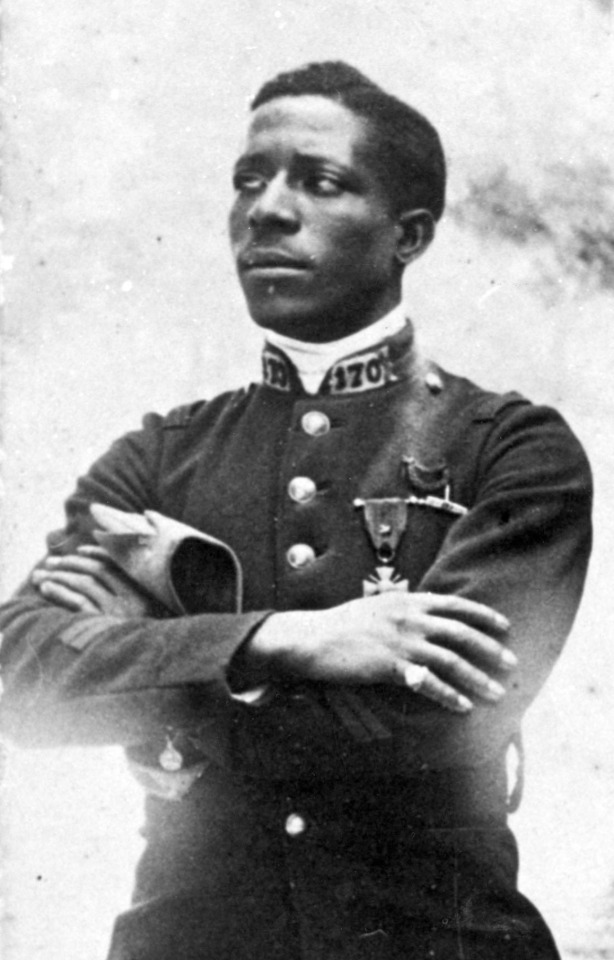
Eugene Bullard was one of the first African American military pilots in the world. Originally from Georgia, Bullard had run away from home when he was 11 and wondered around the state for six years with a clan of gypsies before stowing away on a German cargo ship in 1912. He ended up in Aberdeen, Scotland and eventually ended up in London, where he worked as a boxer and performer for an entertainment troupe. He traveled to Paris for a boxing match and eventually settled there permanently. When World War 1 began in 1914, Bullard joined the French Foreign Legion, where he saw combat at the Somme, Champaign, and Verdun. After being injured during the Battle of Verdun, he was sent to Lyon to recuperate. After recovering in 1916 he joined the French Air Service as a machine gunner. He obtained his pilot's license in 1917. He flew several missions during the war and claimed two victories over German planes. He applied to join the American Air Corps after the United States entered the war in 1917 but was rejected because of his race. Bullard returned to the French Air Service but was removed after an apparent conflict with a French officer. He remained in the military until 1919. He returned to Paris where he worked a nightclub, operated his own nightclub and gym, and married Marcelle de Straumann. After Germany invaded France in 1940, he volunteered to fight again, but was injured during the defense of Orleans. He escaped to Spain and later returned to the United States, settling in Harlem, New York City. In 1949, he was working as a security guard at concert hosted by Paul Robeson. Riots broke out where a racist mob and police officers beat concert goers, including Bullard. He eventually died of Stomach Cancer in 1961.
Bullard received many honors from France. In 1954, the French government invited Bullard to Paris to be one of the three men chosen to rekindle the everlasting flame at the Tomb of the Unkown Soldier under the Arc de Triomphe. In 1959, he was made a Knight of the National Order of the Legion of Honor. He also received the Military Medal, an award given for courageous acts and the third highest award in France. After his death, he also received honors from the United States. He was posthumously commissioned as a Second Lieutenant in the United States Air Force in 1994. He was inducted into the Georgia Aviation Hall of Fame in 1989 and the National Aviation Hall of Fame in 2022. The Museum of Aviation in Warner Robbins, Georgia erected a statute in honor of Bullard.
Ruby Bridges (1954 - )

Ruby Bridges hadn't even been born yet when, in 1954, the United States Supreme Court made a landmark ruling in the Board vs. Board of Education case that declared that desegregation in public schools was unconstitutional. This decision caused protests and celebrations all across the South, including New Orleans, Louisiana. In 1960, when Ruby was 6 years old, U.S. Circuit Court Judge ruled that schools in New Orleans must begin desegregation. Ruby was one of four 6-year-old girls (the others being Lenona Tate, Tessie Provost, and Gail Etienne) selected by the NAACP to participate in the integration. Tate, Provost, and Etienne enrolled at McDonogh 19 Elementary School, while Bridges enrolled at William Frantz Elementary School. All four faced death threats, racial slurs, and taunts. After a race riot broke out at Parish School Board meeting, U.S. Marshalls were called in to escort the girls to and from school.
Since the tumultuous period, Bridges has become a symbol of the Civil Rights Movement. She has been the subject of Songs, documentaries, movies, and 1964 Norman Rockwell painting "The Problem We All Live With". She is currently the Chair of the Ruby Bridges Foundation. She has also received numerous accolades over her life including the Presidential Citizens Medal by President Clinton in 2001, being honored as a "Hero Against Racism" by the Anti-Defamation League in 2006 and being inducted in the National Women's Hall of Fame in 2024.
Bessie Coleman (1892 - 1926)

Bessie Coleman was born the tenth child out of thirteen to a family of sharecroppers in Texas. She walked four miles each day to attend a segregated school where she loved reading and established herself as an exceptional math student. Every harvest season she helped her family harvest cotton. When was turned eighteen years old, she enrolled at the Oklahoma Colored Agricultural and Normal University in Langston, Oklahoma (known today as Langston University). She only completed one term before running out of funds and returning home. In 1915, she moved to Chicago to live with brothers where she worked as a manicurist at a barbershop, where she heard flying stories of pilots returning from their service in World War 1. She took a second job as a restaurant manager to save money in the hopes of becoming a pilot herself, but flight schools in the U.S. at the time were not accepting women nor black people. As such, she was encouraged to study abroad by Robert Abbott, publisher of the African American newspaper 'The Chicago Defender'. To do this she received financial backing from the defender and banker Jesse Binga (founder of the first black owned bank in Chicago).
In 1920, she traveled to France to earn her license. She trained on a Nieuport 14 Biplane. In 1921, she received her pilots license, becoming the first black woman (and first black person in general) to receive a license from the Fédération Aéronautique Internationale. She returned to the United States in September becoming a media sensation. She made a living performing in air shows as a stunt flier. She met with community activists and spoke before crowds about perusing aviation as a profession and the goals of black people in the United States. Unfortunately, she was killed in 1926, when the plane she was flying in lost control and threw her out at 2,000ft. Though she never established her own flight school, her ambitions inspired many other black aviators to this very day.
Katherine Johnson (1918 - 2020)
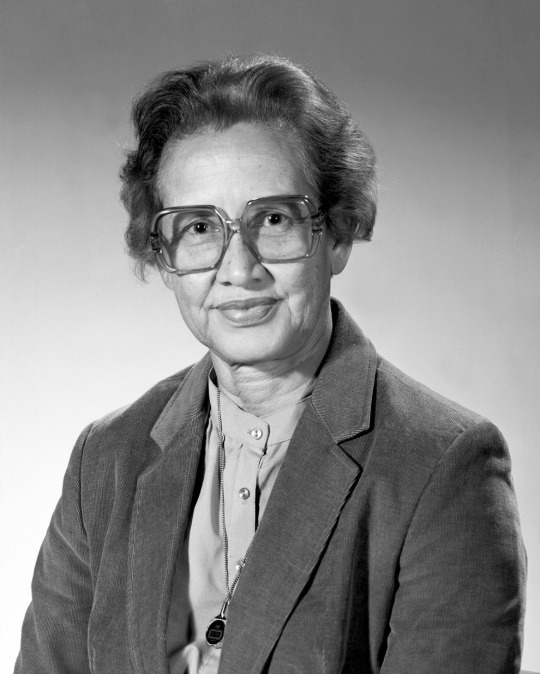
Katherine Johnson was one of the first black to be employed as a scientist at the National Aeronautics and Space Administration. Born in White Sulpher Springs, West Virginia, she was the youngest of four children. Her mother was a teacher, and her father was a lumberjack, farmer, and handyman. From an early age she displayed strong mathematical abilities, so her parents enrolled her in high school in Institute since their home county didn't school for African Americans passed the 8th grade. After graduating high school, she enrolled at West Virginia State College, where took every mathematics course offered (new classes were even added just for her). She graduated 'summa cum laude' in 1937 and took a teaching job Marion, Virginia.
In 1938, the Supreme Court ruled that states that provide higher education for white students must provide it for black students as well. As a result of this, Johnson was selected along with two men to become the first black students to be enrolled at the West Virginia University Graduate School in 1939. However, she left the program to start a family with her husband James Goble. The couple had three daughters: Joylette, Katherine, and Constance.
At a family gathering in 1952, a relative informed her that the National Advisory Committee for Aeronautics (NACA, the precursor to NASA) was hiring mathematicians and that the Langley Research Center was hiring Black applicants as well as white. Johnson took a job at the agency in 1953. She spent 33 years with NACA and NASA, where she earned a reputation as a human computer for mastering complex mathematical calculations and helping pioneer the use of electronic computers. She worked at topics including gust alleviation, flight trajectories, and launch windows. Her work was instrumental to the Apollo Missions during the Cold War 'Space Race'. For her work she was awarded the Presidential Medal of Freedom in 2015, the Silver Snoopy Award and a NASA Group Achievement Award in 2016, and the Congressional Gold Medal in 2019. She was the one of the subjects of the 2016 film Hidden Figures, and she was posthumously inducted into the National Womens Hall of Fame in 2021.
Shirley Chisholm (1924 - 2005)

Shirley Chisholm was the first black woman to be elected to the United States Congress. She was born in Brooklyn to working class parents. Since her mother face difficulty working and raising her children, Shirley and her three younger sisters were to live with their grandmother in Barbados. She said about her grandmother "Granny gave me strength, dignity, and love. I learned from an early age that I was somebody. I didn't need the black revolution to teach me that". She returned to the United States in 1934 and in 1939, began attending the integrated Girl's High School in Brooklyn. She did so well academically, she served as the Vice President of the Junior Arista Honor Society. She attended Brooklyn College where she majored in sociology and graduated in 1946. She married her husband Conrad in 1949. After suffering two miscarriages, the couple learned they could not have children. She worked as a teacher's aide from 1946 to 1953, during which she went on to obtain her master's degree in childhood education from Columbia University in 1951. She soon became an authority on childhood education and child welfare as a consultant for the Division of Day Care in New York City's Bureau of Child Welfare.
She entered politics when she joined the effort to elect Lewis Flagg Jr. to the bench as the first black judge in Brooklyn. The election group became known as the Bedford–Stuyvesant Political League (BSPL), which pushed candidates that supported civil rights and advocated for expanding opportunities in Brooklyn. After leaving the BSPL she worked with a number of different political groups including the League of Women Voters, the National Association for the Advancement of Colored People (NAACP), the Urban League, and the Democratic Party Club in Bedford-Stuyvesant, Brooklyn.
In 1964, Chisholm decided to run for the New York State Assembly after the present holder, Thomas R. Jones, was appointed to the New York City Civil Court. Despite resistance because she was a woman, she appealed to women voters and won the Democratic primary in June. She was elected in December serving in the assembly from 1965 to 1968, where she championed several pieces of legislation including expanding unemployment benefits and sponsoring the introduction of the SEEK program which helped disadvantaged kids enter college. In 1968 Chisholm ran for the United States House of Representatives for New Yorks 12th District, which had recently been redrawn to incorporate the Bedford-Stuyvesant neighborhood. She ran with the slogan "unbought and unbossed" and won the district with a nearly 2 to 1 margin over her opponent, becoming the first black woman ever elected to Congress. She served on a number of different committees during her career, including the Agriculture, Veterans, and Education and Labor Committees. She worked with Bob Dole to expand the Food Stamps program, played a critical role in the creation of the WIC program, and was a founding member of the Congressional Black Caucus and the National Women's Political Caucus. In 1972, she became the first black candidate for a major-party nomination for President of the United States and the first woman to run for the Democratic Party's presidential nomination, though she ultimately lost the nomination. She retired from politics in 1983, after 14 in Congress. She was posthumously awarded the Presidential Medal of Freedom in 2015.
Thurgood Marshall (1908 - 1993)

Thurgood Marshall was a lawyer and jurist who served as the black justice of the United States Supreme Court. Marshall was originally from Baltimore, Maryland, where graduated from high school with honors in 1925 and then attended Lincoln University in Pennsylvania where he graduated with honors in 1930 with a bachelor's degree in American literature and philosophy. While at Lincoln, he led the schools debate team to numerous victories. He attended Howard University Law School in Washington, D.C. because he couldn't attend the all-white University of Maryland Law School. While at Howard, he was mentored by NAACP first special counsel and Law School Dean George Hamilton Houston. He graduated first in class in 1933. He joined Houston as his assistant at the NAACP in 1935, where they worked together on the landmark case Missouri ex rel. Gaines vs. Canada, which ruled that any state which provides a school to white students had to provide in-state education to black students as well. After Houston returned to Washington, Marshall took over his position as special counsel to the NAACP and also became director-counsel of the NAACP Legal Defense and Educational Fund Inc.
During his career he argued 32 civil rights before the Supreme Court, winning 29 of them. Many of them were landmark cases including Smith vs. Allwright (which ruled that primary elections must be open to voters of all races), Morgan vs. Virginia (which ruled that a state law enforcing the segregation of interstate buses was unconstitutional), Shelley vs. Kramer (which ruled that racially restrictive housing covenants cannot be legally enforced), and Brown vs. Board of Education (which ruled that state laws requiring segregation in schools was unconstitutional).
In 1961, President John F. Kennedy appointed him as a judge on the United States Court of Appeals for the Second Circuit in order for Kennedy to demonstrate his commitment to the interests of black Americans. He took the oath after numerous delays by southern Senators. Marshall authored 98 majority opinions while on the bench. He was nominated as the United States Solicitor General by President Lyndon B. Johnson in 1965, where he won fourteen of the nineteen Supreme Court cases he argued. In 1967, Johnson nominated Marshall to be a Supreme Court Justice after Justice Tom C. Cark resigned. He took the Oath of Office on October 2. Marshall remained on the Court for 24 years until his retirement in 1991. A staunch liberal, he often dissented from the court as the liberal majority vanished and the court became more conservative. During his tenure he advocated for equal rights for minorities, opposed the death penalty, and supported abortion rights.
Jesse Owens (1913 - 1980)

Jesse Owens was an American track and field athlete who won four gold medals at the 1936 Summer Olympic Games. Owens was born the youngest of ten children in Oakville, Alabama. In 1922, his family moved to Ohio during the great migration in search of better opportunities. As a child, he developed a passion for running, which was encouraged by his middle school track coach Charles Riley. It was in middle school where he met Minnie Solomon. They married in 1935 and had three daughters: Gloria in 1932, Marlene in 1937, and Beverly in 1940. He first came to national attention while attending high school where he equaled the world record of 9.4 seconds in the 100 yards dash and long-jumped 24 feet 91⁄2 inches at the 1933 National High School Championship in Chicago. While a student at Ohio State University, Owens won a record eight NCAA championships. Notably in 1935, he set three world records and tied a fourth during the Big Ten Conference track meet in Ann Arbor. He equaled the world record of 9.4 seconds in the 100-yard dash and set records for the long jump at 26 feet 81⁄4 inches, the 220-yard sprint at 20.3 seconds, and the 220-yard low hurdles at 22.6 seconds, which cemented him in track and field history.
In 1936, in despite of his apprehension, he was selected to compete in the Summer Olympics in Berlin, Germany. At the time, Germany was under the iron grip of the Nazi regime led by Adolf Hitler. Hitler saw the games as an opportunity to promote the Nazi ideals of antisemitism and Aryan supremacy. He believed German athletes would dominate the games. However, he visions went unfulfilled. Over the length of competition Owens won Gold Medals in the 100-meter dash at 10.3 seconds, the long jump at 26 ft 5 inches, the 200-meter sprint at 20.7 seconds, and the 4 x 100-meter sprint relay at 39.8 seconds. On August 1, Hitler shook hands with the German victors only and left the stadium and then skipped all further medal presentations. Despite his victories, racial discrimination in the United States made it difficult for Owens to earn a living, being prohibited from appearing at sporting events and refused commercial sponsorships. He attempted several careers, but all they proved fruitless. He hit rock bottom in 1966, when he was prosecuted for tax evasion. In 1955, President Dwight D. Eisenhower selected Owens as a Goodwill Ambassador, being sent all around the world to promote physical exercise and tout American freedom and economic opportunity in the developing world, a position held until the 1970s. He also did product endorsement for corporations such as Quaker Oats, Sears and Roebuck, and Johnson & Johnson. He was invited to the 1972 Munich Summer Olympics as a guest of the West German government. He eventually retired and moved to Arizona with his wife. Owens succumbed to Lung Cancer in 1980 at the age of 66 and was buried in Tucson, Arizona. In 1983 he was inducted into the U.S. Olympic Hall of Fame and was posthumously a Congressional Gold Medal in 1990.
Hiram Revels (1827 - 1901)
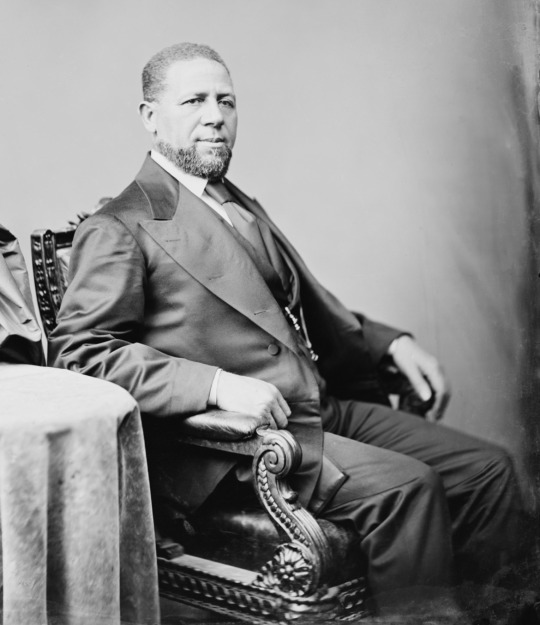
Hiram Revels was the first African-Amercian to serve in the United States Congress. He was born to free black people in Fayetteville, North Carolina. His father was a Baptist preacher. He attended a Quaker seminary in Indiana as a boy and in 1845, was ordained as a minister with the African Methodist Episcopal Church. He traveled throughout the Midwest preaching and acted as a religious teacher. He studied religion at Knox College in Illinois from 1855 to 1857 and then became a minister a Methodist Episcopal Church in Baltimore, Maryland, while also serving as a high school principal. During the Civil War, he enlisted as a Chaplain in the Union Army and helped recruit and organized two black regiments in Maryland and Missouri.
In 1866, Revels was called to be the pastor in Natchez, Mississippi where he settled permanently with his wife and five daughters. In 1868, during the Reconstruction Era, he was elected as an Alderman of Natchez and in 1869, he was elected to represent Adams County in the Mississippi State Legislature. In 1870, Revels was elected to the United States Senate by the state legislature to fill the seat left since before the Civil War. Southern Democrats opposed his seat, stating that the 1857 Dred Scott decision disqualified him on basis if citizenship. He officially became the first black senator on February 25. As a senator, he advocated compromise and moderation, and supported racial equality. He served on both the Committee of Education and Labor and the Committee of the District of Columbia (at the time, Congress administered the district). His professional conduct was greatly admired by fellow congressmen and the Northern press. After his term expired, he became President of Alcorn Agricultural and Mechanical College in Claiborne County, Mississippi (currently Alcorn State University). He served in this post until his retirement in 1882. In 2002, he was listed as one of 100 Greatest African Americans by Molefi Kete Asante.
Henry Johnson (1897 - 1929)

Henry Johnson was an American soldier who was noted for heroic actions during World War One. Originally from North Carolina, he moved to Albany, New York and worked variety of menial jobs before enlisting in the army in 1917, two months after the United States entry into the First World War. The unit he was assigned to, the all-black New York National Guard 15th Infantry Regiment, was mustered into federal service and redesignated as the 369th Infantry Regiment, commonly known as the Harlem Hellfighters. The regiment was assigned to labor service duties while stationed in Europe. The black service members faced discrimination and harassment by white soldiers and even the American headquarters. The American commander loaned the regiment to the French Army. It's believed he did this because white soldiers refused to fight alongside black soldiers. The French enthusiastically welcomed the new troops.
The regiment, Johnson included, was assigned to the Ardennes Forest. While on outpost duty on the night of May 14, 1918, Johnson came under attack by a German raiding party. Using only his bare hands, a bolo knife, his rifle butt, and some grenades, he was able to repel the attackers, killing four of them and preventing the capture of his fellow soldiers, all while suffering 21 wounds. He was given the nickname "Black Death" for his actions and awarded the Croix de guerre by France. However, his actions went unrecognized in the U.S. because of racial discrimination, and he died poor and in obscurity. However, he has since been posthumously given several awards by the military, including the Purple Heart in 1996, the Distinguished Service Cross in 2002, and the Medal of Honor in 2015. In 2023, the U.S. Army base Fort Polk in Louisiana was renamed Fort Johnson in his honor.
Dorothy Height (1912 - 2010)
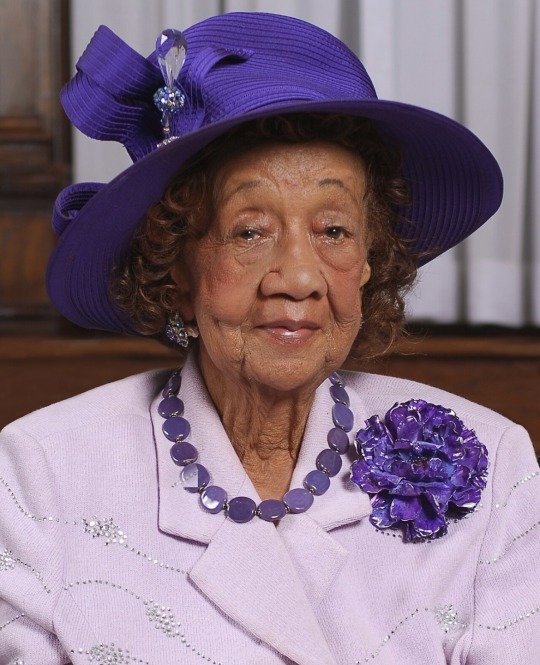
Dorothy Height was an activist for both the Civil Rights and Women's Rights movements. Height was born in Richmond, Virginia and moved to Rankin, Pennsylvania when she was five. Her mother was active in the Pennsylvania Federation of Colored Women's Clubs, and regularly took along Dororthy to meetings, which exposed her to activism from a young age. Height was an enthusiastic participate in Young Women's Christian Association, who was eventually elected as president of the club. She was appalled to learn that her race prevented her from using the YMWA's central branch swimming pool and dedicated much energy to changing the YWCA. While in high school she was active in the anti-lynching movement and won first place and a $1,000 scholarship in a national oratory contest held by the Elks Club. Height graduated from high school in 1929 and was accepted entry in Bernard College at Columbia University but was barred from entering because the school had an unwritten policy of only admitting two black students a year. She instead enrolled at New York University and graduated with a bachelor's degree in 1932 and a master's degree in educational psychology in 1933. She pursued postgraduate work at the New York School of Social Work.
From 1934 to 1937, Height worked for the New York Department of Welfare, a job she credited for teaching her conflict resolution skills. She then took a job as a counselor at the YWCA Harlem Branch. While working there she met civil rights activist Mary McLeod Bethune and First Lady Eleanor Roosevelt at a meeting of the National Council of Negro Women being held at the YWCA office. During this meeting Bethune told her "The freedom gates are half ajar. We must pry them fully open". She dedicated her life to this cause. She also did work with the United Christian Youth Movement, a group that worked to relate faith to real-world problems.
Beginning in 1939, she worked at YWCA offices in New York City and Washington, D.C., specializing in interracial relations. She ran trainings, wrote periodicals, and worked in Public Affairs on race issues. She believed that segregation caused prejudice through estrangement, so after the YWCA adopted in interracial charter in 1946, Height worked to help white members of the organization transcend their apprehension and bring their action in line with what the YWCA principles by running workshops, facilitating meetings, and writing articles. In 1958, she was elected president of the National Council of Negro Women and remained at the post until 1990. While president of the NCNW, she worked alongside civil rights leaders such as Martin Luther King Jr., John Lewis, and Whitney Young. Thanks to her background as an orator, she became a master at acting as the middleman in initiating dialogue between feuding parties. In 1963 she became head of the "Action Program for Integration and Desegregation of Community YWCAs", which was started in response to the growing civil rights movement. In this role she worked to monitor progress in integrating the association. In 1974, she was named to the National Commission for the Protection of Human Subjects of Biomedical and Behavioral Research, which was formed in response to the Tuskegee Syphilis Experiment scandal. She was also a driving force behind the movement to get a statue of Mary McLeod Bethune in Lincoln Park, the first statue of a woman or a black person to be erected on federal land.
She was inducted into the National Women's Hall of Fame in 1993. She was awarded the Presidential Citizen's Medal in 1989, the Presidential Medal of Freedom by President Bill Clinton in 1994, a Congressional Gold Medal by President George H.W. Bush in 2004, and President Barack Obama called Height "the godmother of the civil rights movement and a hero to so many Americans". She died on April 20, 2010, at the age of 98. She was buried at Fort Lincoln Cemetery in Maryland after a funeral at the National Cathedral in Washington D.C. She is considered one of the driving forces of the American Civil Rights Movement.
10 notes
·
View notes
Photo




ANGELA BASSETT wins Entertainer of the Year at the 54th NAACP Image Awards 2023
111 notes
·
View notes
Text
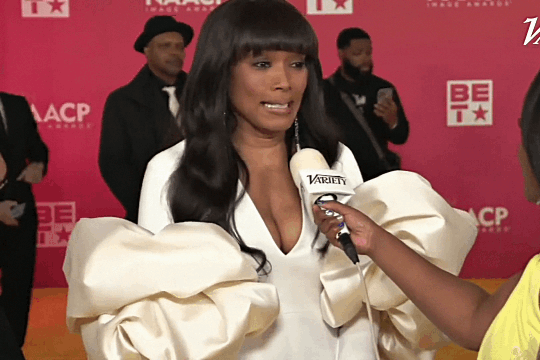


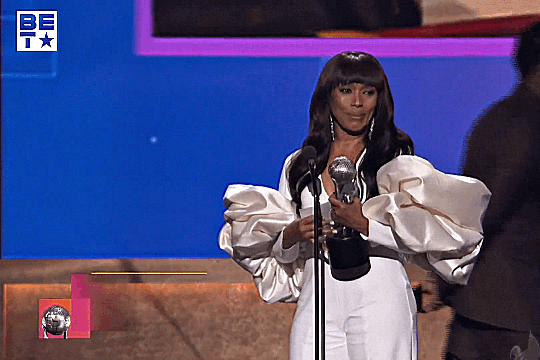
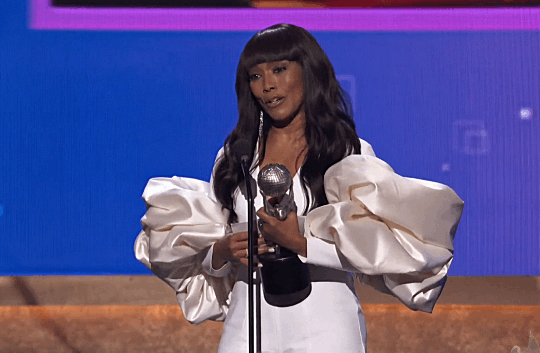






Congratulations to Angela Bassett winning on three (!) NAACP Image Awards (Entertainer of the Year, Outstanding Supporting Actress in a Motion Picture, Outstanding Actress in a Drama Series)
+ the poorly framed moment of the evening

85 notes
·
View notes
Text
NAACP IMAGE AWARDS HISTORY:



2012 award ceremony:
outstanding performance in a youth/children’s program (a.n.t. farm)
2013 award ceremony:
outstanding performance in a youth/children’s program (a.n.t. farm) [winner]
2014 award ceremony:
outstanding performance in a youth/children’s program (a.n.t. farm) [winner]
2015 award ceremony:
outstanding performance in a youth/children’s program (how to build a better boy)
2019 award ceremony:
entertainer of the year
outstanding actress in a motion picture (the hate you give) [winner]
entertainer of the year
outstanding new artist [winner]
outstanding female artist
outstanding album (people you know)
outstanding song, contemporary (ex) [winner]
2021 award ceremony:
outstanding character voice-over performance (the owl house)
outstanding album (ayané)
outstanding female artist [winner]
outstanding duo, group or collaboration (forfeit ft. lucky daye)
outstanding music video/visual album (plenty more) [winner]
outstanding soul/r&b song (mad at me)
2022 award ceremony:
outstanding character voice-over performance (the owl house)
outstanding soul/r&b song (cancelled)
2023 award ceremony:
outstanding character voice-over performance (the owl house) [winner]
outstanding duo, group or collaboration, contemporary (ur best friend ft. kehlani)
outstanding soundtrack & compilation album (turning red)
outstanding soul/r&b song (ur best friend ft. kehlani)
2024 award ceremony:
entertainer of the year
outstanding supporting actress in a motion picture (scream 6)
outstanding album (grudges)
outstanding female artist [winner]
outstanding soul/r&b song (irresponsible)
outstanding music video/visual album (deeper)
wins: 9
nominations: 29
#fame dr#halle bailey#shifting script#actress dr#singer dr#black shifters#shifting scenarios#famedr script#kiana lede#naacp image awards#naacp
5 notes
·
View notes
Text
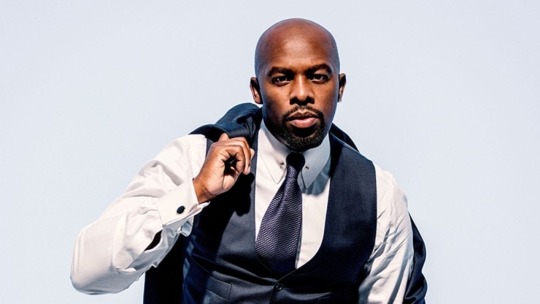
Joe Lewis Thomas (July 5, 1973) known mononymously as Joe is a singer, songwriter, and record producer. Raised in Opelika, Alabama, he relocated to New Jersey, and in 1992 he signed a record deal with Polygram Records. He rose to prominence after releasing his debut album Everything the following year. He followed it with a series of successful albums under Jive Records, including All That I Am (1997), the international bestseller My Name Is Joe (2000) as well as the multi-certified albums Better Days (2001) and And Then... (2003). Several songs from these albums became hit singles on the pop and R&B record charts, including the #1 hit “Stutter”, the top ten entries “All the Things (Your Man Won’t Do)”, “Don’t Wanna Be a Player”, and “I Wanna Know” as well as his collaborations “Faded Pictures”, “Thank God I Found You” and “Still Not a Player”.
He was born in Columbus, Georgia, and was the child of evangelist preachers. He moved to Opelika, Alabama during his formative years and graduated from Opelika High School.
He released most of his projects independently through ventures with Kedar Massenburg and Plaid Takeover Entertainment. His twelfth album My Name Is Joe Thomas became his eleventh album to score a top five-placing on Billboard’s Top R&B/Hip-Hop Albums chart, while lead single “So I Can Have You Back” became his fourth #1 hit on the Adult R&B Songs chart over three consecutive decades (1990s, 2000s, and 2010s). In 2010, Billboard listed Joe at 48th on its list of the Top 50 R&B and Hip Hop Artists of the past 25 years. An ASCAP Award recipient for his song “I Wanna Know”, he is a seven-time Grammy Award nominee and has been nominated for numerous other awards and accolades, including a BET Award, an NAACP Image Award, and four Soul Train Music Awards. #africanhistory365 #africanexcellence
5 notes
·
View notes
Text
I first saw Bamboozled as a 15-year-old, in April 2001, at the Ritzy Cinema in Brixton, south-west London, and it threw me for a loop. Written and directed by Spike Lee, the film is an intense satire about a frustrated African American TV executive, Pierre Delacroix (Damon Wayans), who creates a contemporary version of a minstrel show in order to purposefully get himself fired, and expose the commissioning network as a racist and retrograde outfit. However, the show, which features its black stars wearing blackface, becomes a huge hit, prompting Delacroix’s mental collapse, and an explosion of catastrophic violence, the effects of which are felt far and wide.
In a fraught contemporary climate where the mediation of the black image in American society is at a crucial juncture, Bamboozled’s trenchant commentary on the importance, complexity and lasting effects of media representation could hardly feel more urgent. Each time an unarmed black person is killed, then hurriedly repositioned in death as a thug, a brute, or a layabout by mainstream media outlets – as has happened recently to Trayvon Martin, Michael Brown, Eric Garner, Samuel DuBose and countless others – we are seeing the perpetuation of old anti-black stereotypes, forged in the crucible of mass American art, reconfigured for our time.
Lee’s film traces a grim continuum between stereotypes old and new, connected by knotty skeins of institutional racism. Many critics at the time of the film’s release suggested that Lee had needlessly reopened old wounds; that the dark days of minstrelsy were comfortably behind us, and that we should move on. Yet Lee’s vision was not only necessary, it proved remarkably prescient. During the course of writing this book, I rewatched episodes of garish reality TV shows like Flavor of Love (2006-8), starring the clock-wearing rapper-cum-jester Flavor Flav, and The Real Housewives of Atlanta (2008-). I had to concede that Bamboozled’s nightmarish New Millennium Minstrel Show didn’t look so far-fetched after all. I sat gape-mouthed in front of Lee Daniels and Danny Strong’s musical soap opera Empire (2014-) – a wildly entertaining but exceedingly dubious carnival of black pathologies – and couldn’t help but wonder if it was the type of show that would get Bamboozled’s master-wigger network boss Dunwitty (Michael Rapaport) hot under the collar at proposal stage.
When, in October 2014, I saw footage of freshly signed rapper Bobby Shmurda literally dancing on a table in front of a group of executives, exactly like performer Manray (Savion Glover) does in Bamboozled, I began to wonder whether Lee was in fact a secret soothsayer. Not even he, however, could have predicted the transcendentally weird tale of Rachel Dolezal, the NAACP leader in Spokane, Washington, who was revealed to have been white, and posing as African American all along. At the time of the incident, many wags on social media suggested that Lee would be the ideal man to direct Bamboozled 2: The Rachel Dolezal Story.
Bamboozled’s shrewd commentary on the lack of behind-the-scenes diversity in mainstream entertainment is also especially relevant today. The presence of figures like Robin Thede – head writer on The Nightly Show With Larry Wilmore, and the first black woman to hold that position on a late-night network comedy show – and Shonda Rhimes, the powerful showrunner behind Grey’s Anatomy, Scandal and How To Get Away With Murder, is heartening. Yet a report released in March 2015 by the Writer’s Guild of America West revealed that minority writers accounted for just 13.7% of employment: a dismal statistic. Moreover, Rhimes’s success didn’t insulate her from being disrespectfully branded as an “Angry Black Woman” – that most pernicious of stereotypes – in a rancid, supposedly flattering article by Alessandra Stanley in the New York Times
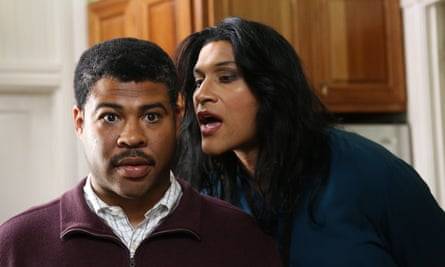
While most of us can cheer the incrementally increasing diversity on our film and television screens, Bamboozled forces us to question the quality and progressiveness of these roles. Ostensibly it’s great that talented actors such as Mo’Nique (Precious, 2009), Octavia Spencer (The Help, 2011) and Lupita Nyong’o (12 Years a Slave, 2013) are winning Oscars, but isn’t the shine taken off somewhat by the fact they were rewarded by the establishment for playing, respectively, a psychotic “welfare queen”, a neo-Mammy in a white savior period picture, and a chronically abused slave? Why don’t black women win Oscars for playing complex heroines or crotchety geniuses like their white male counterparts? Because old stereotypes die hard within an industry that prefers stasis over change. Perhaps even more disturbingly, there’s something inherently soothing about such stereotypes for mass audiences – a point particularly relevant to the wild popularity of Bamboozled’s own minstrel show.
And how far have we come, really? Ridley Scott cast a host of white actors (including a fake tan-enhanced Christian Bale and Joel Edgerton) in his Middle Eastern epic/flop Exodus: Gods and Kings (2014), but his response to complaints was both flippant, and distressingly matter-of-fact: “I can’t mount a film of this budget, where I have to rely on tax rebates in Spain, and say that my lead actor is Mohammad so-and-so from such-and-such. I’m just not going to get it financed. So the question doesn’t even come up.” The best riposte to Scott and his film came from independent black film-maker Terence Nance, who wrote that “[l]ike The Birth of a Nation before it, [Exodus] traffics in absurd cultural appropriation and brown-faced minstrel casting/makeup techniques to rewrite African history as European history, and in so doing propagates the idea that European cultural centrality is more important than historical fact and the ever-evolving self-image of African-descended people as it is influenced by popular representations of people of color in Western media distributed worldwide.”
Nance, however, is just one talented black film-maker among many (Dee Rees, Tina Mabry, Haile Gerima, Julie Dash, Barry Jenkins et al) who have struggled to attract funding to tell artistic and personal stories outside of the monolithic, corporate world of mainstream entertainment which Bamboozled so acidly depicts (even if it is set in the world of TV rather than film.) Lee has long been vocal about the struggles he’s faced in raising funds to tell black-focused stories, and even he had to go cap in hand to fans on Kickstarter to crowd-fund his idiosyncratic, low-budget vampire movie Da Sweet Blood of Jesus (2014). Da Sweet Blood is his most excessive, least easily readable work since Bamboozled, but it can’t match his earlier film for sheer visceral impact.
Bamboozled, then, is a genuine one-off, but I can detect traces of its relentless, irritable, questioning approach in a variety of contemporary art. I see it in Justin Simien’s excellent college-set satire Dear White People (2014), which was inspired by horrific, real-life blackface parties at universities across America. I see it in the antic situational comedy of Key & Peele, whose best sketch, musical spoof “Negrotown”, compresses the madness, pathos and insight of Lee’s film into four-and-a-half harrowingly hilarious minutes. I see it in Branden Jacobs-Jenkins thrillingly audacious play An Octoroon (2013), which reconfigures blackface tropes in daring ways. Most of all I see it coursing through the veins of Paul Beatty’s scabrous satirical novel The Sellout (2015), about a shiftless young black Angeleno who hatches a plot to reintroduce racial segregation, and takes an elderly slave – a disturbed former “pickaninny” star of Little Rascals films – while he’s at it. Like Lee’s film, it plays as a shotgun blast to the face of formal convention, it’s stubbornly resistant to a single concrete interpretation, and it has a lot of very painful things to say about America today.
ABC’s enjoyably gentle sitcom Black-ish (2014-), meanwhile, simultaneously echoes Delacroix’s crisis – with its premise of a middle-class black ad executive (Anthony Anderson) jockeying for position in a white corporate space – and feels like the kind of show Delacroix, free of Dunwitty’s pressure, might have concocted himself.
Lastly, I couldn’t help but think of Bamboozled while poring over Ta-Nehisi Coates’s epic essay in the Atlantic, The Case for Reparations, which uncovers, in forensic detail, the institutional plunder of black Americans from slavery to redlining to mass incarceration and its destructive impact on families. Coates’s fury is more controlled than Lee’s, but it’s equally sincere, and his essay shares with Bamboozled the central imperative to look directly into the heart of past racial sins in order to plot a productive way forward.
It is time, then, to take a close look at Bamboozled, which deserves to be respected as much more than a mid-career oddity in Lee’s filmography. It is a vital work that’s equal parts crystal ball and cannonball: glittering and prophetic, heavy and dangerous.
#Bamboozled: Spike Lee's masterpiece on race in America is as relevant as ever#Bamboozled#Spike Lee#Black Film#Black Movies#Black Actors#The Wayans Brothers#Black and White Comedy
7 notes
·
View notes
Text
The New Jim Crow: Mass Incarceration in the Age of Colorblindness

The New Jim Crow: Mass Incarceration in the Age of Colorblindness
Seldom does a book have the impact of Michelle Alexander’s The New Jim Crow. Since it was first published in 2010, it has been cited in judicial decisions and has been adopted in campus-wide and community-wide reads; it helped inspire the creation of the Marshall Project and the new $100 million Art for Justice Fund; it has been the winner of numerous prizes, including the prestigious NAACP Image Award; and it has spent nearly 250 weeks on the New York Times bestseller list.
Most important of all, it has spawned a whole generation of criminal justice reform activists and organizations motivated by Michelle Alexander’s unforgettable argument that “we have not ended racial caste in America; we have merely redesigned it.” As the Birmingham Newsproclaimed, it is “undoubtedly the most important book published in this century about the U.S.”
Now, ten years after it was first published, The New Press is proud to issue a tenth-anniversary edition with a new preface by Michelle Alexander that discusses the impact the book has had and the state of the criminal justice reform movement today.
Named one of the most important nonfiction books of the 21st century by Entertainment Weekly‚Slate‚Chronicle of Higher Education‚ Literary Hub, Book Riot‚ and Zora
A tenth-anniversary edition of the iconic bestseller—“one of the most influential books of the past 20 years,” according to the Chronicle of Higher Education—with a new preface by the author
“It is in no small part thanks to Alexander’s account that civil rights organizations such as Black Lives Matter have focused so much of their energy on the criminal justice system.” —Adam Shatz, London Review of Books
2 notes
·
View notes
Text

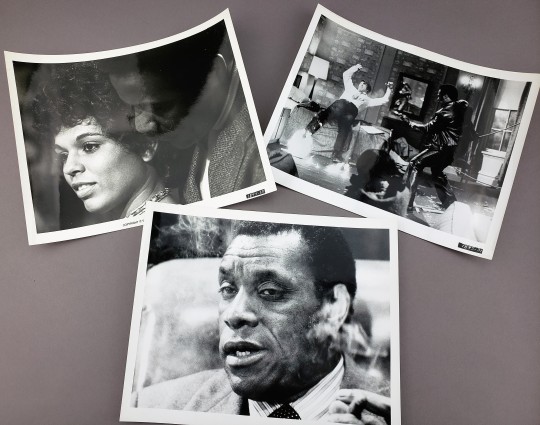
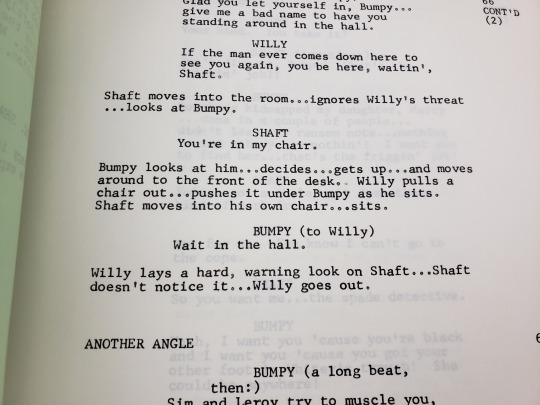
Shaft and the Era of Blaxploitation
Last year, Special Collections and Archives at the University of Iowa Libraries acquired items to form a new collection: the Black Film and Television Collection. In honor of Black History Month, we’re shining a spotlight on a different item from this collection each week.
In last week’s post, we discussed the lobby card for Oscar Micheaux’s 1938 film Swing, starring Cora Green. Our next spotlight is on original materials from the 1971 film Shaft, which includes the script used in the production in the movie, which was a defining entry in the Blaxploitation genre.
What is “Blaxploitation?”
We’ll start with the obvious: the word itself blends “Black” and “exploitation” and was coined by Beverly Hills-Hollywood NAACP president Junius Griffin in 1972 and wasn’t in the context of praise.
Blaxploitation movies are made by black filmmakers with black actors for black audiences. They portray strong black characters who were the heroes and leads. During the mid- to early 1970s, more than 200 movies of the genre were made, in subgenres such as horror, westerns, comedy, drama, and action.
Rather than trying to dispel stereotypes, movies like Shaft reinforce them. And while the movies were popular with audiences, that approach did create some critics, like Junius Griffin and other NAACP members.
Exploiting a lurid loophole
The Hays Code ruled Hollywood from 1934 to 1968, enforcing a strict set of moral standards for films. But filmmakers tend to be creative people, and “exploitation films” were the loophole they chose. If they depicted these offensive (and entertaining) subjects under the guise of a cautionary tale, they could get away with including them.
Over the years, court cases and boundary-breakers chipped away at the Hays Code. In 1968—the same year most history textbooks mark as the end of the Civil Rights Movement because it coincides with the assassination of Dr. Martin Luther King, Jr.—the Motion Picture Association of America (MPAA) scrapped the Code in favor of the film rating system. It was into these unique circumstances that a new genre—Blaxploitation—was born.
John Shaft’s world
Shaft is an adaptation of Ernest Tidyman’s 1970 detective novel, directed by Gordon Parks. Opening on an urban panorama overlaid with a funk soundtrack, the movie stars Richard Roundtree as John Shaft, a stylish and suave private detective in New York who is approached by the boss of a Harlem organized crime family (Moses Gunn) in search of his kidnapped daughter (Sherri Brewer). In the course of his mission, Shaft dispatches mafiosos, teams up with activists in the Black Power Movement, and delivers enough one-liners to cement his legacy as one of the iconic characters of 20th century film.
Even a brief glimpse at the original movie script’s pages (like the one shown above) showcase the swagger and bombast of the protagonist, who would go on to anchor multiple sequels. The movie’s iconic theme song, written and recorded by Isaac Hayes, has been sampled and reused dozens of times since the movie’s release, and the film itself has been preserved by the Library of Congress. It provides one of the early blueprints for the Blaxploitation genre, which continued to flourish throughout the 1970s.
It’s well worth noting that while Shaft’s director, stars, and core audience were Black, its writers were both white men. This information certainly complicates how many viewers receive the film’s representation of Black characters—and those complications became the focus of blaxploitation’s most vocal detractors.
Blaxploitation may have had its heyday in the 1970s, but it’s never truly ended. The genre was carried into the 21st century by the generation of filmmakers it inspired, including John Singleton, Spike Lee, and the Hughes Brothers.
Our next entry will be a look at Cheryl Dunye’s 1997 film The Watermelon Woman, and the growing influence of Black women in the film industry.
---Natalee Dawson, Communication Coordinator at UIowa Libraries with assistance from Anne Bassett, Liz Riordan, and Jerome Kirby
26 notes
·
View notes
Text









Usher's Year in Awards and Honors:
City of Atlanta Phoenix Award
NAACP Image Awards: President and Entertainer of the Year Awards
Key to the City of Chattanooga
Apollo Theater's Icon Award
ASCAP Voice of Culture Award
BET Lifetime Achievement Award
Billboard R&B's Entertainer of the Year
Black Music Action Coalition's Quincy Jones Humanitarian Award
Ebony Power 100 Global Humanitarian Award
20 notes
·
View notes
Note
I don't mean to be on anonymous, but you never answer me when I put my actual name. Just wanted to let you know The Color Purple won best movie at the NAACP Image awards. Fantasia got Best Leading Actress in a Drama Film, and Taraji got Best Supporting Actress. I know how upset you were for TCP only getting one nomination at the Oscars.
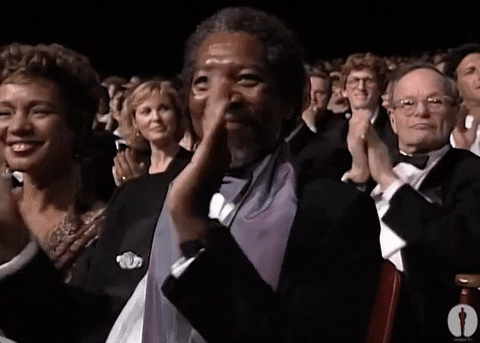
Sorry for the super-late response Anon.... The past few weeks have been pretty busy and kinda stressful for me, so I apologize that I'm getting to so many msgs so LATE. 😔
But anyway, I'm so happy for them honestly! 😁
You're right, I was flabbergasted that TCP was barely even acknowledged at the Oscars this year 🙄.... but yet, a simple musical about acting and trying to make it as an actor and a jazz musician in LA (La La Land) swept an entire awards season years ago. 😒 (and I actually LOVED "La La Land"! I just think it was a tad OVERhyped.... just like "Barbie" 👀 🫣)

Good for them! 👏🏾 I'm so happy for all of them. 😊 I'm glad that at least they were appreciated by the NAACP Awards. 🥰
They deserved to be acknowledged at mainstream awards as well, but hey, it is what it is. 🤷🏾♀️
3 notes
·
View notes
Photo

Today In History Richard B. Harrison, actor who played “De Lawd” in the play, Green Pastures, received the 17th NAACP Spingarn Medal on this date March 22, 1931 for his long, illustrious career as a dramatic reader and entertainer who interpreted English drama to the masses of African Americans. Richard B. Harrison found his passion for acting as a child. He devoted his life to pursuing this passion in the face of Jim Crow, finally becoming nationally acclaimed in the last years of that life. CARTER™️ Magazine carter-mag.com #historyandhiphop365 #cartermagazine #carter #staywoke #wherehistoryandhiphopmeet #blackhistory #blackhistorymonth #richardbharrison #history https://www.instagram.com/p/CqF2YFpLTj-/?igshid=NGJjMDIxMWI=
#historyandhiphop365#cartermagazine#carter#staywoke#wherehistoryandhiphopmeet#blackhistory#blackhistorymonth#richardbharrison#history
16 notes
·
View notes